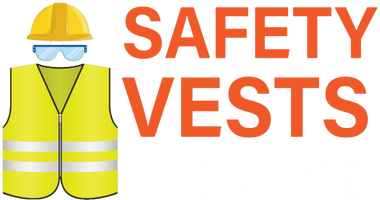Looking for durable and reliable traffic cones? At Safety Vests and More, we don’t just sell traffic cones—we deliver safety and peace of mind, right to your door. Our selection, crafted from premium materials, ensures you can manage traffic flow, secure construction zones, and protect pedestrians with confidence. From compact mini cones perfect for tight spaces to tall, high-visibility cones for bustling highways and parking area, we’ve got everything you need to enhance safety wherever it matters most.
The Birth of the Modern Traffic Cone
The first patented design resembling the modern traffic pylon was created by Charles D. Scanlon in 1940. His invention, known as the "Safety Coner," was made of a single piece of rubber and featured a cone shape with reflective stripes. This design addressed many of the previous limitations and paved the way for the development of standardized traffic cones.
Technical Specifications and Usage Guidelines
To ensure uniformity and safety, the United States government, through the Manual on Uniform Traffic Control Devices (MUTCD), has provided guidelines on the use of traffic cones. These guidelines include specifications for size, color, and placement of cones in various traffic control scenarios.
Why Choose Our Traffic Safety Products?
- High-Quality Materials: Our orange traffic cones, collapsible traffic cones, and other products are crafted from durable, weather-resistant materials like PVC, rubber, and thermoplastics. Built to withstand tough outdoor conditions!
- Variety for Every Need: From mini traffic cones for training to large traffic cones for high-visibility areas, our selection ensures you find the perfect fit for your requirements.
- Safety First: Featuring reflective strips for enhanced visibility in low light, our cones comply with government safety guidelines, making them ideal for construction zones, roadwork, and events.
Explore Our Collection of Traffic Cones
✅ Standard Orange Traffic Cones: Available in a variety of sizes—Perfect for most traffic control needs, including construction zones and lane markings.
✅ Collapsible Traffic Cones: Lightweight, foldable, and easy to store. Ideal for emergency situations or temporary setups.
✅ Other Color Traffic Cones: From Lime yellow traffic cones for special demarcation to blue cones for accessibility zones, we’ve got you covered.
✅ Mini Traffic Cones: Great for parking lot marking or as promotional items, these little traffic cones are both practical and fun.
✅ Tall Traffic Cones: Designed for high-visibility, these tall traffic cones ensure safety even in high-speed zones.
✅ Retractable Traffic Cone Bar: A versatile solution for blocking off areas, perfect for crowd control or temporary lane closures.
✅ Accessories: Maximize efficiency with tools like the retractable traffic cone bar for instant barriers.
Choosing the appropriate size for safety cones is crucial for ensuring road safety and compliance with traffic regulations. The size of the cones you use should be based on the type of road and the applicable speed limit to maximize visibility and effectiveness.
- For single carriageways with speed limits up to 30 mph or dual carriageways restricted to 40 mph or less, safety cones with a minimum height of 450mm are required. This size is also recommended for single carriageways where speeds range from 31 mph to 41 mph.
- For higher-speed roads, such as single or dual carriageways with speed limits of 50 mph or more, cones should be at least 750mm tall to provide the necessary visibility and safety at greater speeds.
To ensure both safety and legal compliance, it’s essential to select the correct cone size based on the specific road conditions and speed limits. Always prioritize the right traffic pylon height for each scenario to maintain a safe and clearly marked road environment.
Why Choose Us? You don’t have to step out or search endlessly—get the cones you need delivered straight to your location with unmatched convenience, competitive pricing, and top-notch service. Our products are crafted for durability and reliability, ensuring the safety of your team and the public at all times.
Order your premium traffic safety cones today and experience unmatched convenience with doorstep delivery!
Applications of Traffic Cones
Traffic cones are versatile and serve various functions, including:
- Lane Marking and Redirection: Guide drivers through construction zones or lane shifts.
- Crowd Control: Perfect for events or emergency situations, traffic cones help direct foot traffic and prevent accidents.
- Parking Control: Mark restricted areas or create temporary parking layouts using our reliable parking cones.
- Work Zone Safety: In construction or road work environments, traffic cones help define safe boundaries for workers and drivers alike.
Shop With Confidence at Safety Vests and More
At Safety Vests and More, we are proud to be your one-stop shop for all your traffic safety cones and road traffic cones needs. Whether you're in search of a specific orange cone traffic or need a variety of sizes to suit different environments, we offer products designed for maximum visibility and durability.
- Orange Traffic Cones: Standard or mini traffic cones, all in bright orange for easy identification.
- Folding and Collapsible Traffic Cones: When storage and portability matter, our collapsible traffic cones are the best choice.
- Large Traffic Cones: Need cones that stand out? Our big traffic cones are built for high-traffic zones and highway safety.
Ready to Shop?
Browse our extensive collection of traffic cones today and find the perfect solution for your safety needs. Don’t settle for less when it comes to protecting lives — choose Safety Vests and More for quality, reliable traffic cones that ensure safety at all times. Whether you need cones for sale in bulk or just a few for a specific project, we’ve got you covered.
Shop Now and Equip Your Site with Top-Quality Traffic Cones and More!

















































